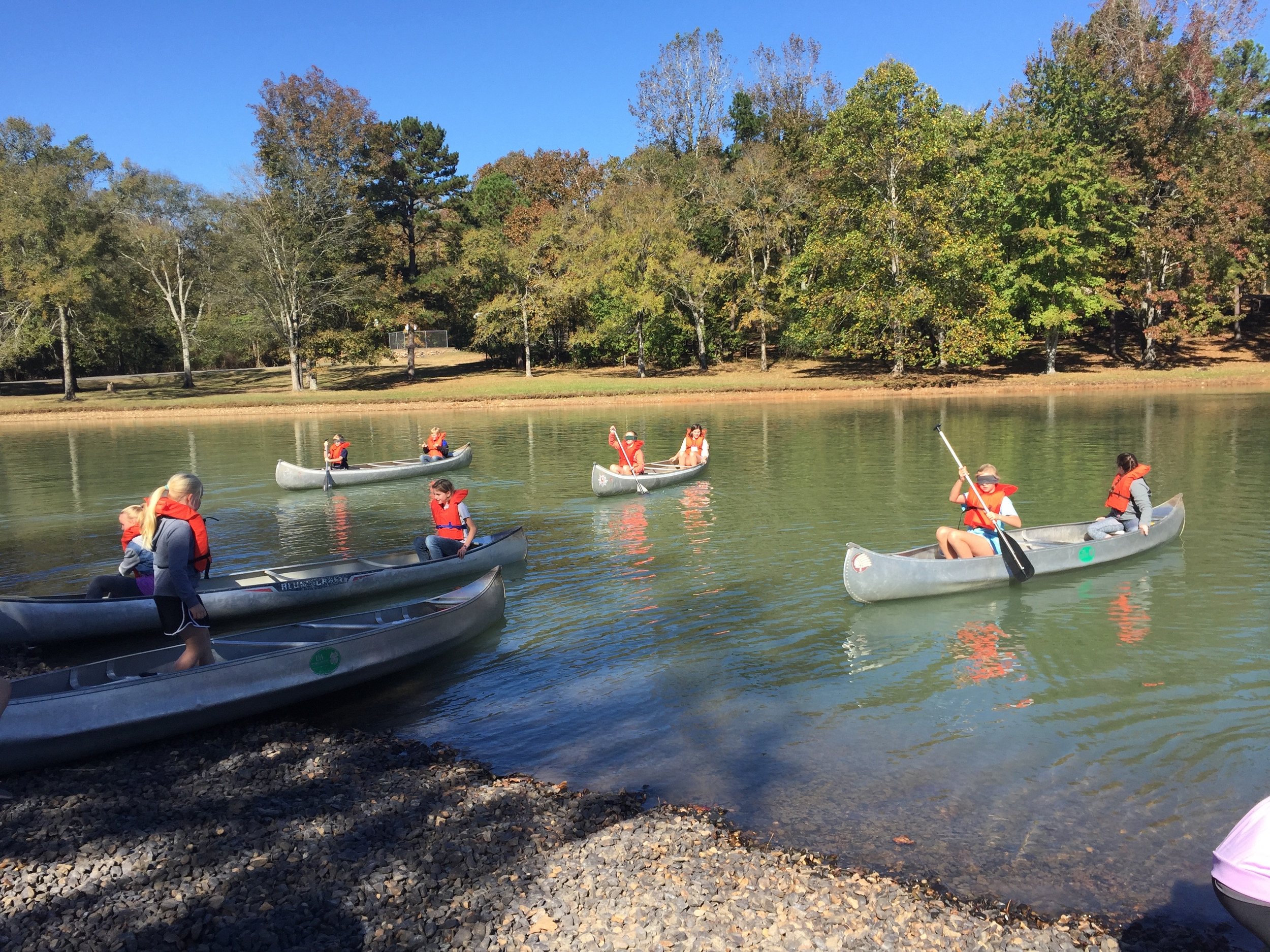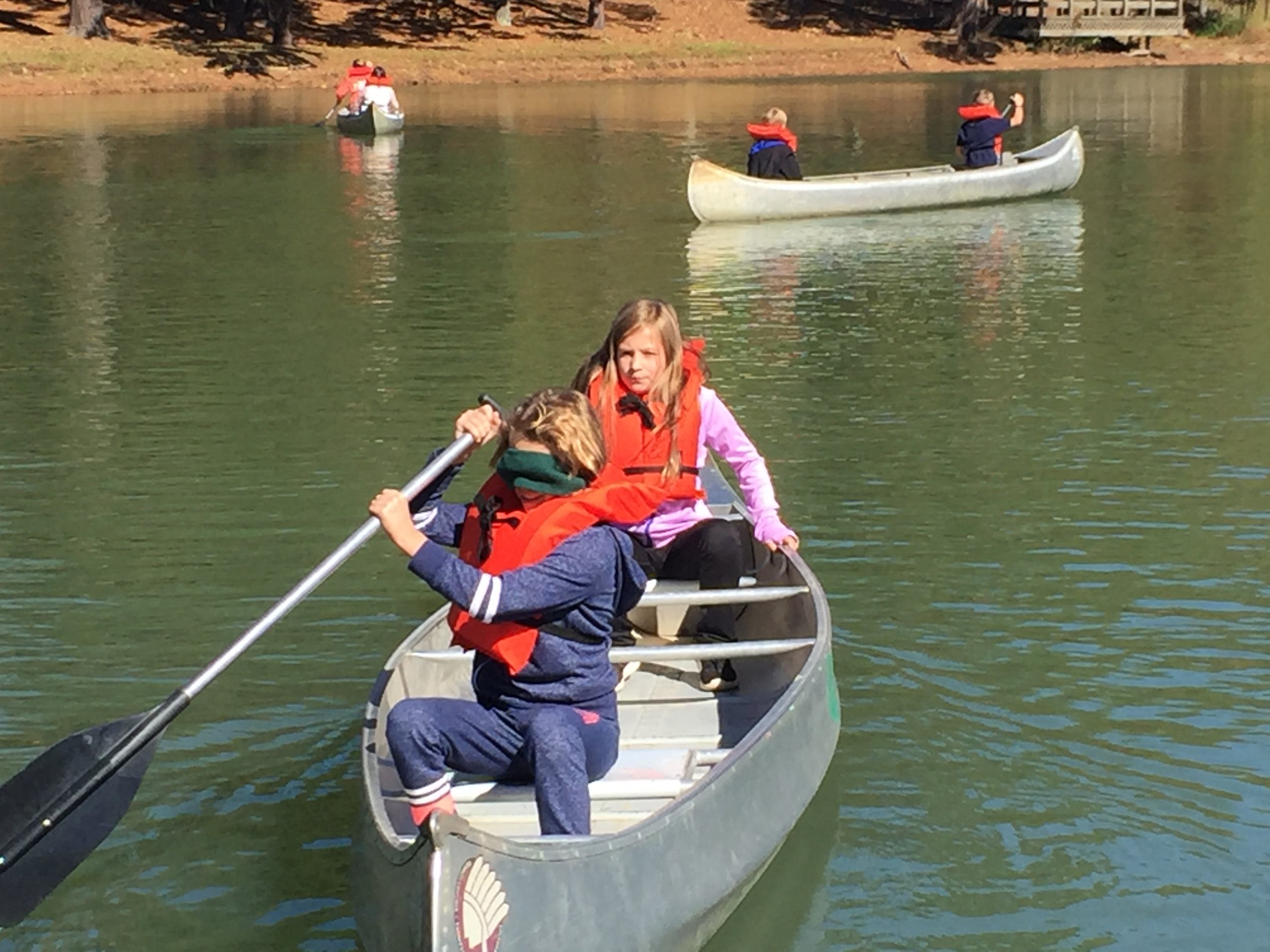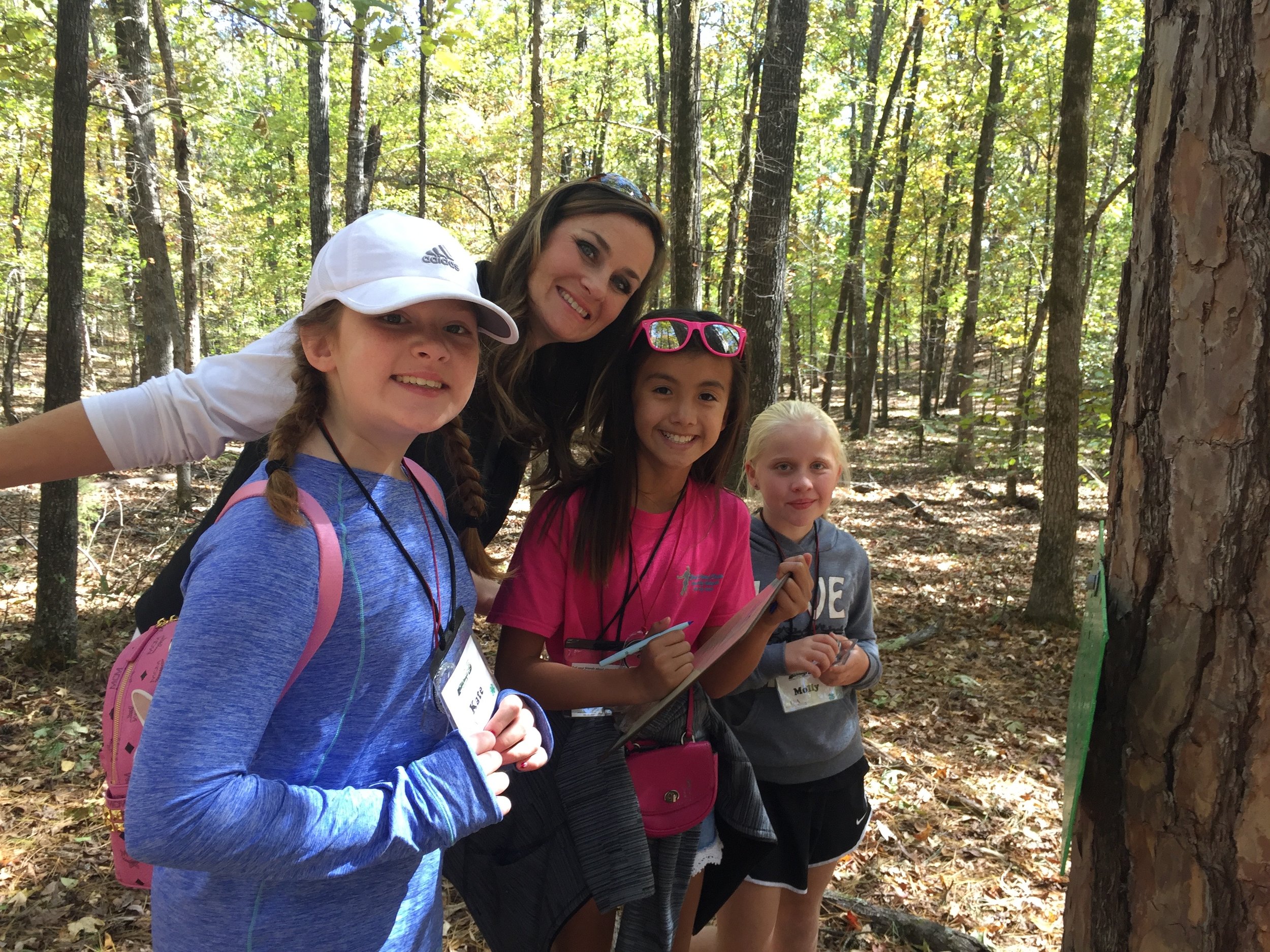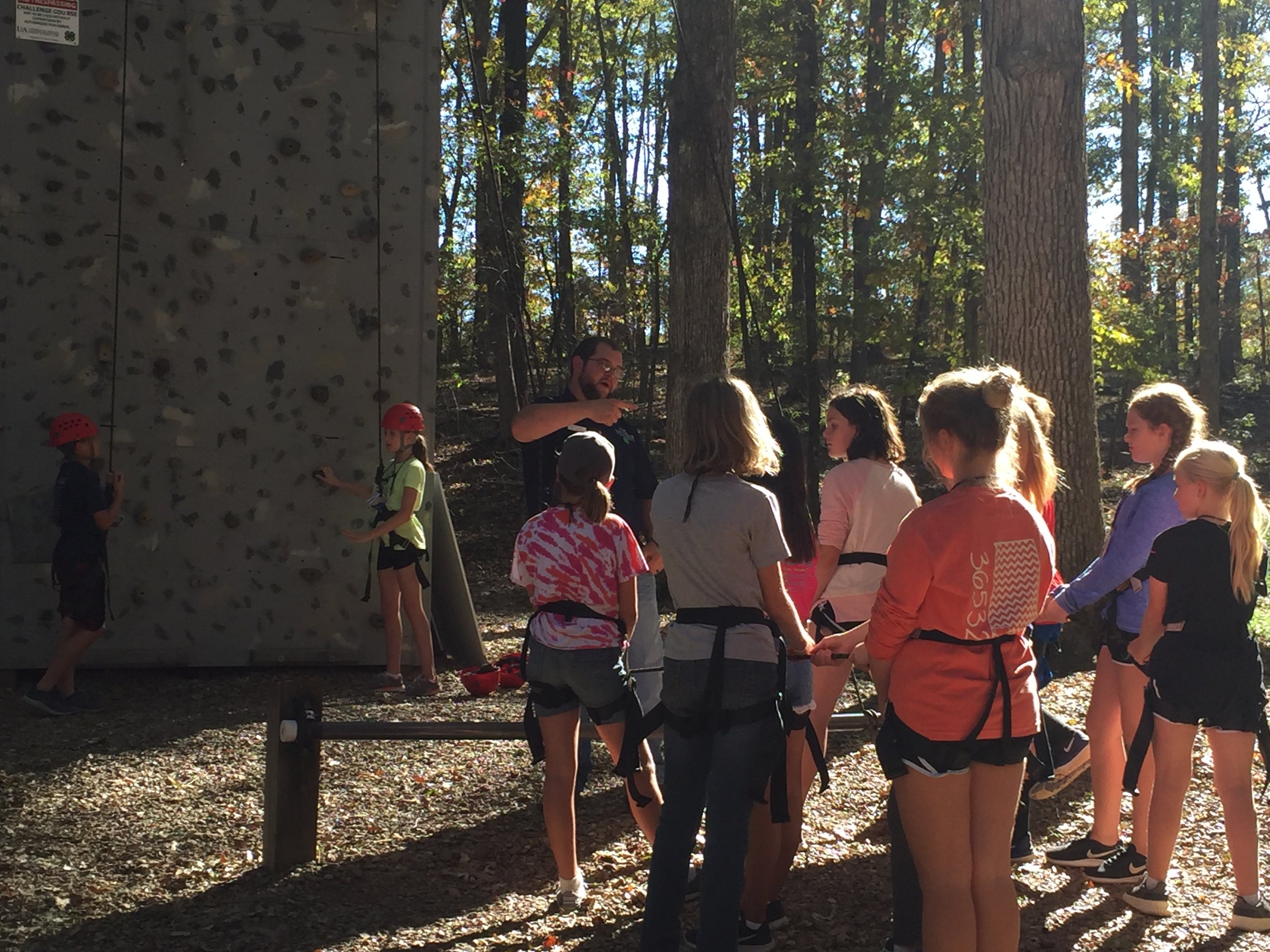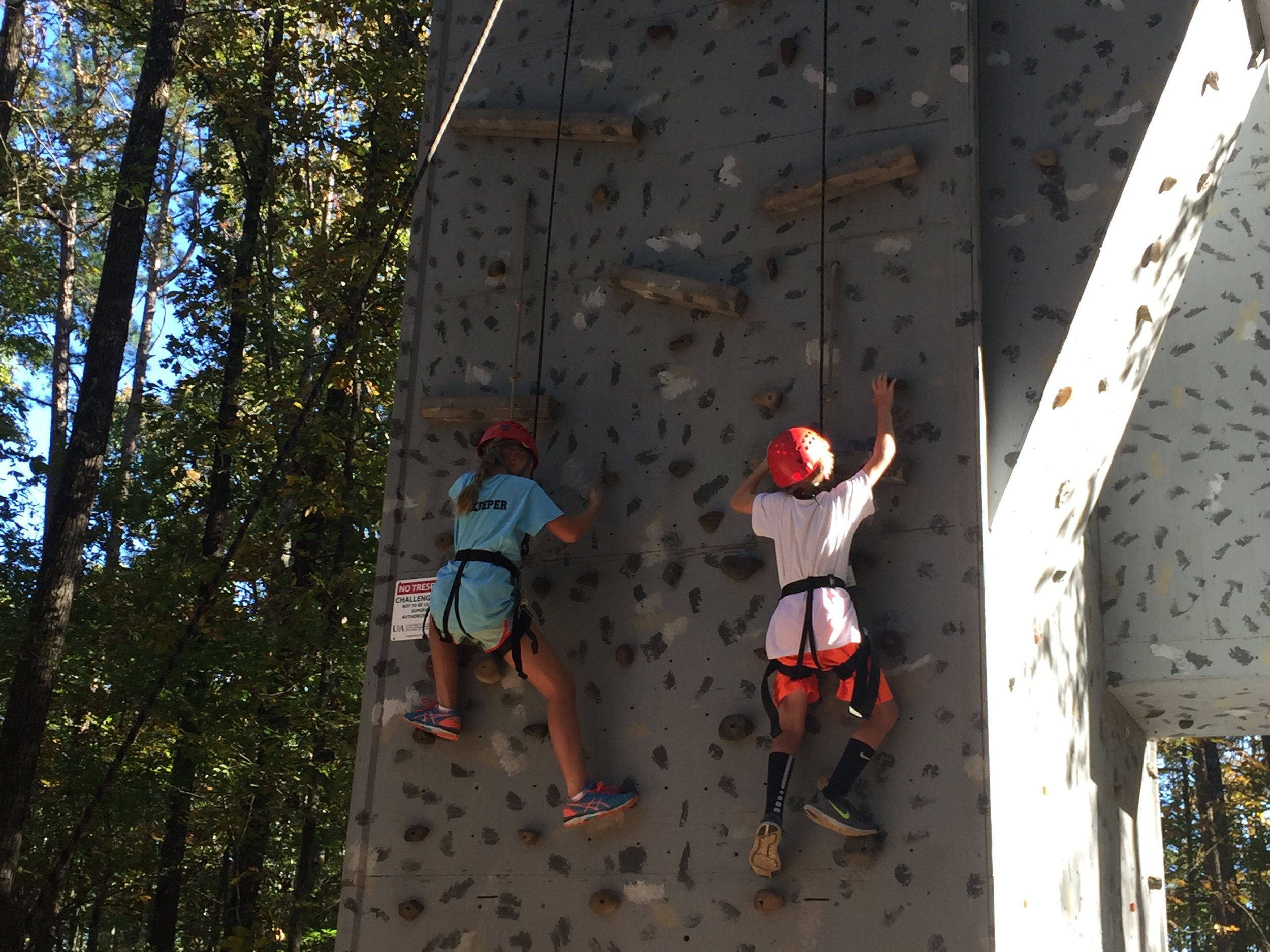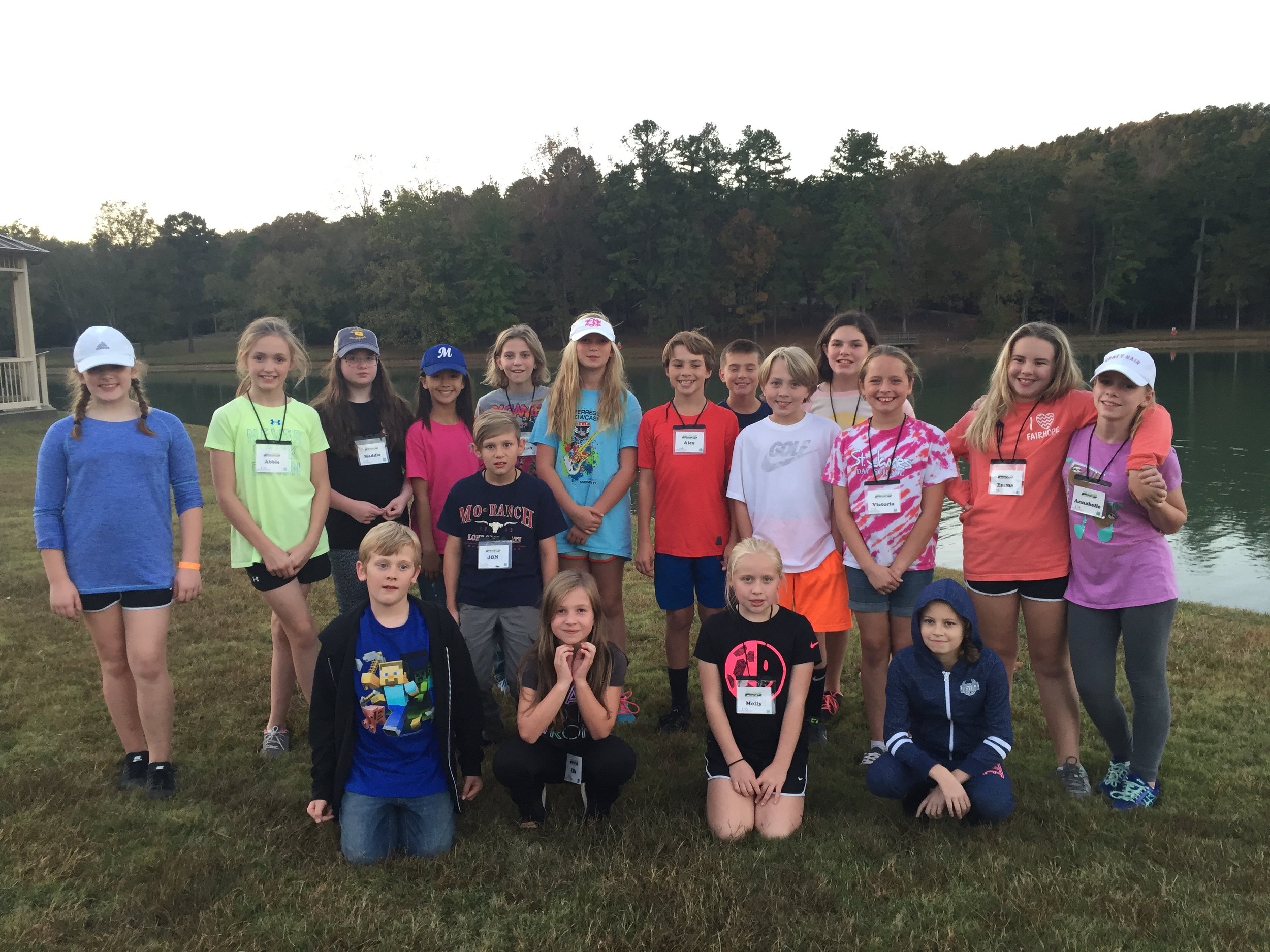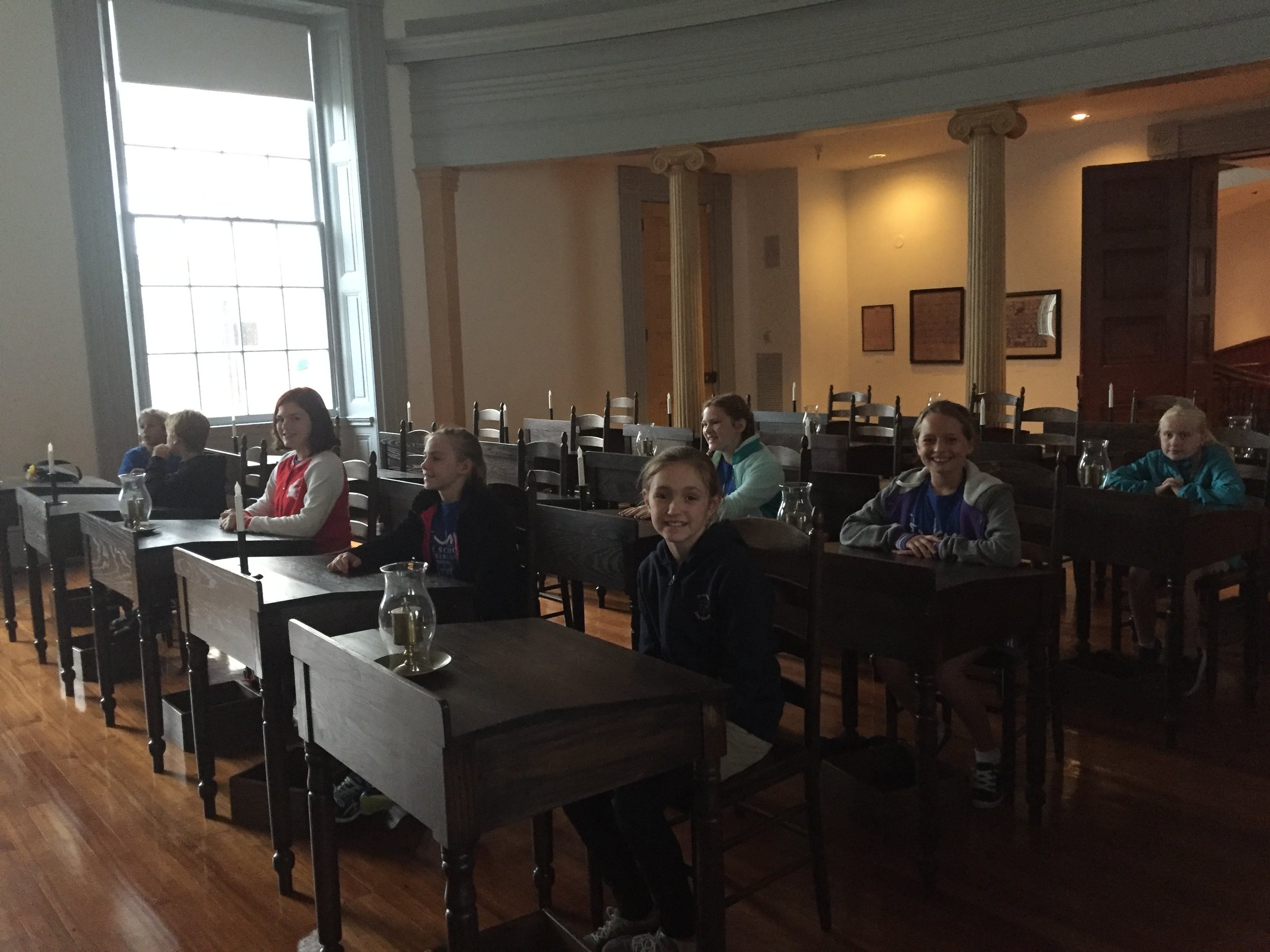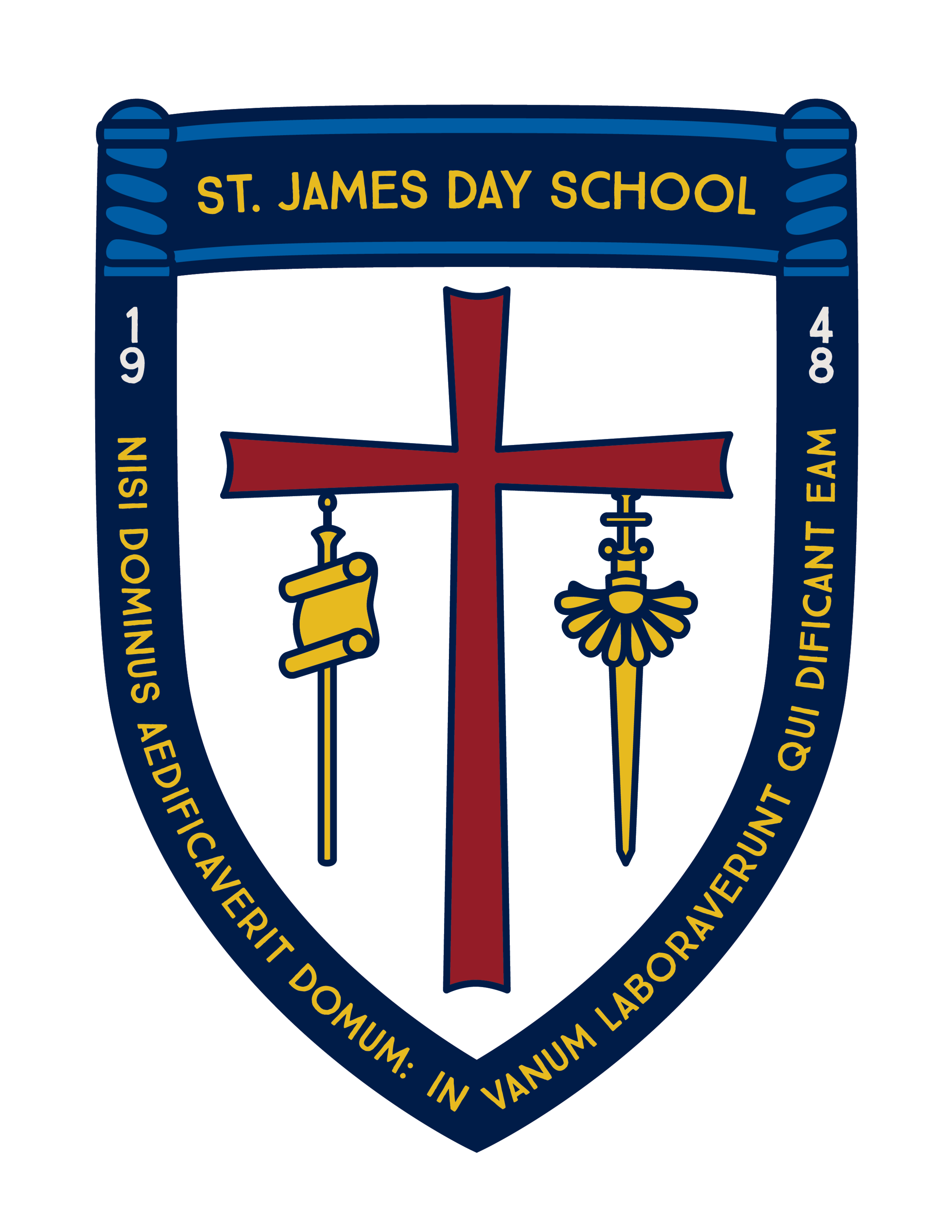Last week, fifth graders enjoyed their overnight class trip to Little Rock. The students have been excited about this little adventure for weeks, and our experience did not disappoint. With 6 wonderful chaperones and myself, we started at the C.A. Vines 4-H Center, which offered us outdoor team-building activities. Students played cooperative games, canoed blind-folded in pairs, and participated in orienteering challenges with compasses. The highlight of the day was the rock-climbing wall, where students climbed in pairs with the support of five students holding each student's rope. It was heartwarming to witness students encourage each other to keep going when they reached tricky spots on the wall. Students loved this!
On Friday, we ventured into downtown Little Rock and braved the cold rain to tour the Old State House. It was neat to see the original state capitol and to explore the various artifacts housed there-- everything from Arkansas First Lady dresses to dinosaur bones! From the Old State House, we traveled to the Historic Arkansas Museum for a Science in History program. Here, we learned the important role that science played in the lives of Arkansas' original settlers. Students began the program in Little Rock's oldest building-Mr. Hinderliter's Grog Shop, which was built in 1827. Students tested a variety of wooden musical instruments there and then proceeded to churn cream to make butter the old-fashioned way. They also learned how ink was originally made, how newspapers were created with a printing press, how simple machines help blacksmiths shape iron tools, and how Arkansas formed its physical boundaries through surveyors' equipment. We finished our adventure with a warm lunch at Gusano's Pizza before heading home. Overall, this experience taught our 5th graders cooperative life skills and how to support each other-- elements that enable us all to live well!
Please check out a few photos from our trip below!
